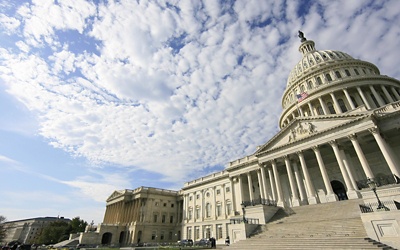Last month I joined leaders from both the public and private sectors in a discussion at the White House. We met in a room as stately and mahogany-adorned as you might envision, with the talk focused on a common goal: using open data to connect job seekers with employers. Closing the gap between skills employers need and locating people with those skills is key to building a more efficient labor market. It’s especially important to one swath of the workforce that we in the U.S. owe our gratitude, which is returning military veterans.
According to the Bureau of Labor Statistics, there are more than 220,000 U.S. veterans that served post 9/11 that are now unemployed members of the labor force, up from 203,000 last year and a number likely to rise with many more military personnel returning from service in the next five years. And while 44 percent of veterans use the Post 9/11 GI Bill to pursue educational opportunities and build more skills, finding a job is still often cited as the greatest challenge to transitioning back into the civilian world.
Yet veterans’ unemployment is often not due to lack of skills, or from lack of highly-desirable qualities that are polished in the military, including leadership, discipline, and a strong work ethic. The problem is a lack of data and interpretation. The private and public sectors have not done a good job of working together to translate the military experience into what I call “HR parlance,” or to show how veterans’ skills match up with employers’ needs from a workforce planning perspective.
In part, translation is a pain point because veterans spend their careers working within the definitions of the Military Occupational Specialty (MOS) codes, with job titles that don’t match up to those typical in the private sector, making it harder for them to find the right job and for the right job to find them. The skills of someone who was a brilliant logistics coordinator in the Army, for example, could closely match to the needs for a supply chain manager at a company, but due to the language discrepancy, the two may never meet.
Now you may be wondering, how did I end up in this discussion at the White House on a brisk February day? Having spent my career analyzing and building technology with an eye on closing the skills gaps to foster a smarter, more responsive labor market, this issue fits closely with my interests and expertise. The topic of veteran unemployment is also important to some of our customers, including those that participate in the Joining Forces initiative developed to support military families.
Nathaniel Hundt and Leighanne Levensaler of Workday with Aneesh Chopra in Washington D.C.
A few months earlier our Co-CEO and Co-Founder Dave Duffield had introduced me to Aneesh Chopra, who served as President Obama’s first Chief Technology Officer, to discuss how we might partner to address veterans’ unemployment. While he was in government, Aneesh pioneered the use of open data sets to do things like help Americans understand health care performance in their communities. He also leveraged public-private partnerships through an initiative known as the Veterans Jobs Bank, which drives higher rates of employment by connecting veterans seeking jobs with hiring firms.
One of the outgrowths of our collaboration was our participation in the White House roundtable in February. More access to data, we believe, will shine an important light of transparency and allow innovators to dream up creative solutions to the skills gap problem, especially as it pertains to veterans. At the meeting, we began discussions on how the Veterans Affairs, Defense, Education, Commerce and Labor departments can protect individual privacy rights while realizing the public good that could come from opening up, in a de-identified manner, rich data sets such as community surveys and employment records that currently nest in the siloes of departments. The Commonwealth of Virginia, through the Virginia Longitudinal Data System, provides a great example of what is possible when education performance is married to workforce development data. Similarly, organizations such as ours would leap at the opportunity to use their technological know-how to improve the job search and hiring process.
Following the White House meeting, the discussion and solution brainstorming moved up to Capitol Hill, where we met with leaders of the Future Caucus, a bi-partisan group of legislators formed last September. By the end of day, I felt like we made great progress and were moving forward on outcomes. (Read Workday Goes To Washington Part 2: Moving the Discussion Up to Capitol Hill.)






